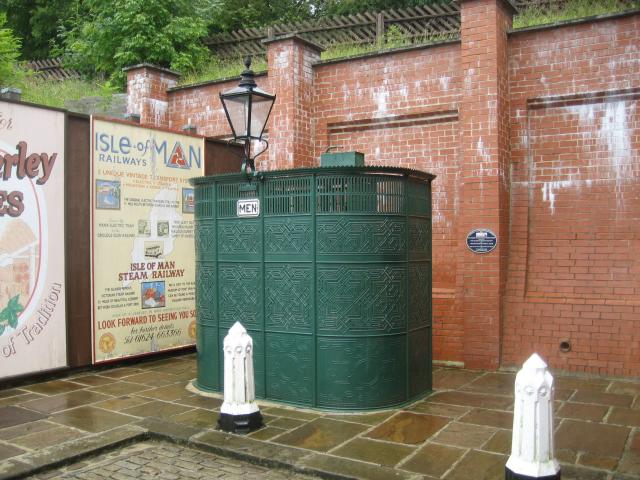
These pictures were sent in by KW in 2007. He writes: "This street urinal was transplanted from Redditch in Worcestershire to the Tramway Museum in Crich, Derbyshire."
In 2009, the editor at Urinal Dot Net recieved the following correction from DR:
"Hello, Regarding the Gentlemen’s urinal at National Tramway Museum, Crich, it came from the Erleigh Road tram terminus in READING, BERKSHIRE and not as captioned.
"I was the person who dismantled the urinal in 1983 and restored it to operation at Crich in 2002."
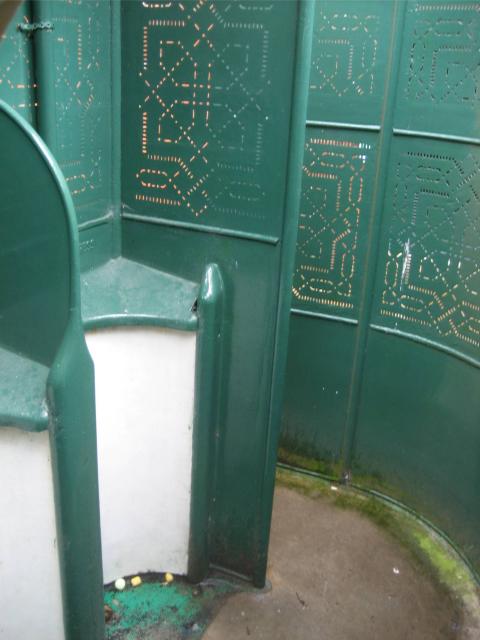
"The National Tramway Museum at Crich, Derbyshire, England, is home to many trams, most of which ran through the streets of cities throughout the United Kingdom and some of which are from other countries. Most of the tram networks, with a few exceptions (mainly Blackpool) closed in the 1960s, although there has been a recent revival with new networks such as the Sheffield Supertram and Manchester Metrolink being built. The museum is based in the Crich Tramway Village, a recreated period village near to the modern village of Crich, near Matlock. The nearest railway station is Whatstandwell on the Derby-Matlock line with a steep uphill walk to the museum."
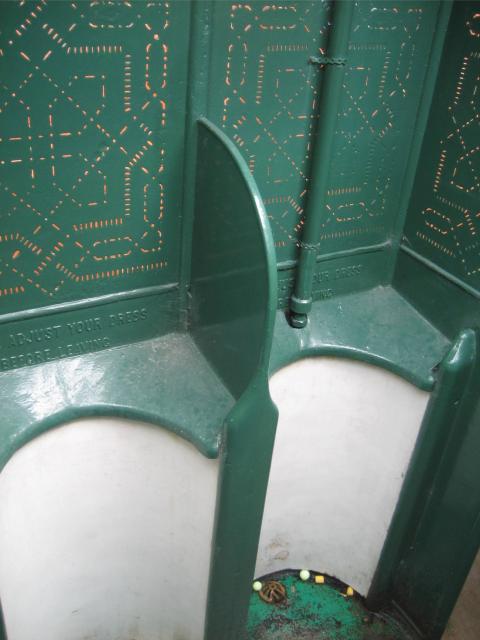
"George Stephenson, the great railway pioneer, had a close connection with Crich and today's tramway follows part of the mineral railway he built to link the quarry with Ambergate. While building the North Midland Railway from Derby to Rotherham and Leeds, Stephenson had found rich coal seams in the Clay Cross area and he saw a new business opportunity. Crich was already well known for the quality of the limestone and Stephenson recognised that he could use the local coal and limestone to produce burnt lime for agricultural purposes, and then utilise the new railway to distribute it. Cliff Quarry, where Crich Tramway Village is now located, was acquired by Stephenson's company and to link the quarry with the limekilns he had built alongside the new North Midland Railway at Ambergate, Stephenson constructed a metre gauge line - apparently the first metre gauge railway in the world. "
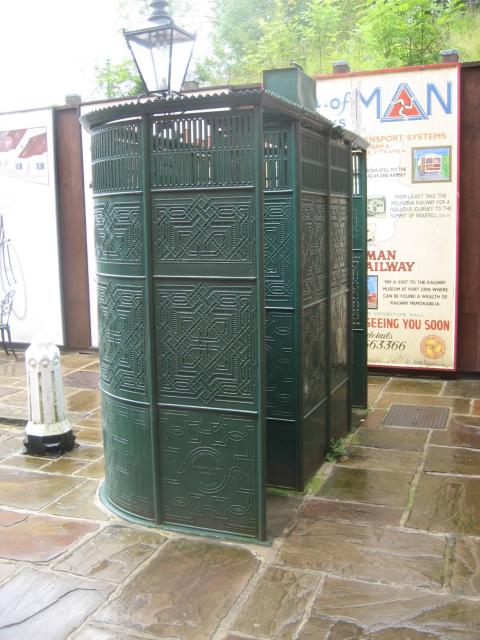
"In the period after the Second World War, when most of the remaining British tramways were in decline or actually closing, the first event in the history of the National Tramway Museum took place. A group of enthusiasts on a farewell tour of Southampton Tramways in August 1948 decided to purchase one of the open top trams on which they had ridden. For the sum of £10 they purchased number 45 —- now the doyenne of the tramcar collection at the Crich Tramway Village. From this act of faith —- at the time there were no heritage railways, museums tended to be of dull glass cases and the idea of amateurs running a tramway or railway seemed incredible —- grew the idea of a working museum devoted to operating tramcars. From the original group developed the Tramway Museum Society, established in 1955, incorporated as a company limited by guarantee in 1962, and recognised as an educational charity in 1963. Over the years, the Society has drawn its members from men and women of all age groups and all sectors of the community, working together in different ways to create the tramway museum."
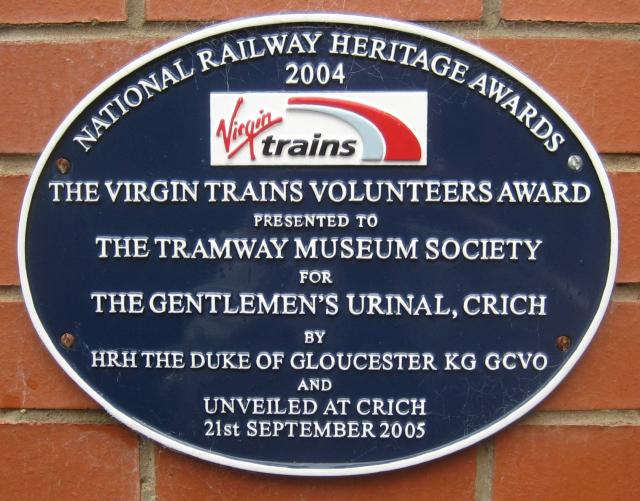
"After a sustained search across the country, in 1959 the Society's attention was drawn to the then derelict limestone quarry at Crich in Derbyshire, from which members of the Talyllyn Railway Preservation Society were recovering track from Stephenson's mineral railway for their pioneering preservation project in Wales. After a tour of the quarry, members of the Society agreed to lease —- and later purchase —- part of the site and buildings. Over the years, by the efforts of the society members, a representative collection of tramcars was brought together and restored, tramway equipment was acquired, a working tramway was constructed and depots and workshops were built. Recognising that tramcars did not operate in limestone quarries, the society agreed in 1967 to create around the tramway the kind of streetscape through which the trams had run and thus the concept of the Crich Tramway Village was born. Members then turned their attention to collecting items of street furniture and even complete buildings, which were then adapted to house the Museum's collections of books, photographs and archives. The vision of the pioneering members who established the Museum, and the work of members who turned the vision into a reality was recognised formally in 1995, when the Secretary of State for Culture, the Media and Sport announced that the Museum was included in the first 26 museums which had been designated because of the outstanding nature of their collections"